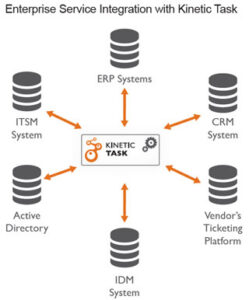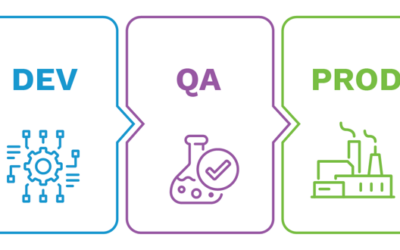New CIO Role: Eight Ways to be a Chief Integration Officer
Research from Deloitte suggests a twist on the title of CIO as chief integration officer, one that combines technology, ideas and processes across functions.
The confluence of disruptive business models, emerging technologies (AI, 5G, blockchain) and the ongoing consumerization of IT has dramatically redefined the role of the CIO. While there’s no question the CIO’s job description is evolving (a Google search “changing role of the CIO” – in quotes – yields more than 35,000 results), there’s no clear consensus on exactly what that means.
CIO.com recently echoed this idea, noting that “Winning in an all-digital world starts with integrated experiences.” Though it’s a few years old, the full report from Deloitte is well worth investigating; it runs to 150 pages, but the summary is an informative, quicker read.
Crucially, it notes that CIOs need to get core IT operations running reliably and efficiently before trying to take on a more strategic role in the business. Here are several key points from the study as they pertain to topics like employee provisioning and IT provisioning, application and service integration, business process automation, and data security.
All Service Begins at Request
This simple idea is an approach to service delivery that combines a single intuitive request portal with back-end approval and scheduling process automation, to accelerate fulfillment, reduce costs, and make users happy.
Critically, the word “implement” in this case does not signify a gargantuan enterprise software acquisition or a long, arduous process. A digital service fulfillment approach is designed to leverage in-place departmental and enterprise management systems, and to roll out incrementally.
As the Deloitte study notes, “The business wants agility — not just in the way software is developed, but as part of more responsive, adaptive disciplines for ideating, planning, delivering, and managing IT.”
Enterprise service catalogs — a.k.a. smart service portals — can start small, with just one or a few services, then be expanded over time in an agile manner. Rather than requiring wholesale replacement of core management systems, ERM leverages in-place technology, enabling enterprises to gradually build out functionality and automate business processes in an evolutionary rather than revolutionary manner.
The Deloitte report summary also suggests enterprises “Build a culture that encourages failure…To think big, start small, and scale quickly, development teams need CIO support and encouragement. The expression ‘failing fast’ is not about universal acceptance and celebrating failure. Rather, it emphasizes learning through iteration, with experiments that are designed to yield measurable results—as quickly as possible.”
Business service portals are more about “succeeding fast.” Support is generated by rolling out a few services, generating quick wins, then expanding upon those successes.
Define & Prioritize IT Services
Smart service experiences don’t have to start with the IT function, though they commonly do.
To build their internal credibility, the Deloitte report recommends CIOs start by providing visibility into the IT “balance sheet,” which “includes political capital, organizational structure, talent, processes, and tools for running the ‘business of IT‘…Maintaining reliable core operations and infrastructure can establish the credibility CIOs need to elevate their missions…it is important to understand the burning issues end users face and then organize the IT portfolio and metrics accordingly.”
The starting point of the ‘all service begins at request’ idea is to design (or redesign if necessary) services from the point of view of the customer (i.e., the employee requesting an IT service or reporting an issue).
This approach should also incorporate both qualitative (through targeted surveys) and quantitative (through collection of SLA and service quality metrics) feedback, to support continual service improvement. Those characteristics help IT staff “understand the burning issues end users face and then organize the IT portfolio and metrics accordingly.”
Expand the Service Catalog Across Business Functions
What starts as an IT service catalog becomes something much larger — a true smart service experience — when services from other functions (HR, facilities, finance, supply chain, etc.) are added to the portal, enabling “one-stop shopping” for any good or service employees need to do their jobs.
The Deloitte summary states that ” It is through… collaboration that CIOs can elevate and broaden their roles. That means working with business leaders to not just give them what they ask for but helping them figure out what they really need.”
Even more powerful that asking business process owners “what they really need” is giving them graphical workflow mapping tools that enable them to design, test, optimize, and deploy their own automated service offerings.
Indeed, the best way to scale this across the enterprise is to give process owners in HR, facilities and other groups such tools so they can add their own “service items” to the smart service portal with minimal IT assistance.
Collaborate to Solve Tough Problems
In the words of the Deloitte report summary, “Another manifestation of ‘integration’ involves tapping into new ecosystems for ideas, talent, and potential solutions.” CIOs need to implement tools and processes for collaboration across departments as well as with vendors, partners, and “nontraditional players such as start-ups, incubators, academia, and venture capital firms.”
Whether the problem to be solved is forward-looking (e.g., redesigning service delivery processes to address a new market) or urgent (fixing a major network outage), effective communication and coordination between key individuals inside and outside the organization requires use of an appropriate enterprise collaboration software tool.
Integrate at the Service Level
Delivering services, analyzing information, and managing complex cross-departmental new employee process workflow requires integration across different platforms and systems that’s reliable, manageable and scalable.
Per Deloitte, ” IT has a necessarily cross-discipline, cross-functional, cross-business unit purview. CIOs acting as chief integration officers can serve as the glue linking the various initiatives together — advocating platforms instead of point solutions, services instead of brittle point-to-point interfaces, and IT services for design, architecture, and integration — while also endeavoring to provide solutions that are ready for prime time through security, scalability, and reliability.”
 Enterprise service integration (ESI), a concept detailed here previously, “Point-to-point data integration is one approach to connecting applications, but is difficult to scale and nightmarish to maintain. Allowing specialized applications to be used in a service-oriented architecture (SOA) is widely regarded as a better approach.”
Enterprise service integration (ESI), a concept detailed here previously, “Point-to-point data integration is one approach to connecting applications, but is difficult to scale and nightmarish to maintain. Allowing specialized applications to be used in a service-oriented architecture (SOA) is widely regarded as a better approach.”
Optimize the User Experience
Creating simple, elegant user interfaces is imperative for any new software development, but the investment in time and the new skills required pays off. Friendly, intuitive UIs:
- reduce (or ideally, eliminate) the need for training;
- increase user adoption;
- improve data accuracy; and
- accelerate data entry.
According to Deloitte, “Having become accustomed to the intuitive experiences they enjoy with smartphones and tablets… customers (and employees) expect…comparable interfaces and experiences…(meeting this expectation requires) a markedly different approach to development and design, one that emphasizes both art and technology.
“(VMware) has assembled development teams composed of artists who intuit the experiences and capabilities users want, and hard-core technologists who translate the artists’ designs into interfaces, customer platforms, and other user experience systems. These two groups bring different skill sets to the task at hand, but each is equally critical.”
Use Smart Service Experiences to Spur Innovation
Describing insurer AIG’s innovative claims processing system, OneClaim, the Deloitte authors write that the “system also forms the foundation for digital initiatives, from mobile member services to the potential for augmenting adjustors, inspectors, and underwriters with wearables, cognitive analytics, or crowdsourcing approaches. IT is spurring discussions about the ‘art of the possible’ with the business.”
By equipping business process owners with powerful yet easy-to-use tools for automating process workflows, a smart service strategy also inspires them to think beyond offerings in an enterprise service catalog.
Examples from organizations that have implemented these concepts run the gamut from iPad-based guest check-in systems to custom inventory management applications to “formless” mobile request systems using QR codes: assets in the CM database an associated QR code related to them; when the user scans the QR code they’re asked if they would like to submit and incident for the asset they scanned.
If confirmed, an incident is created in the system with the proper hardware incident categorization, asset information, group assignment, and user information. A log file is pulled and attached to the incident for a technician to review.
Build Data Security Into Solutions
With the increasing number of high-profile data breaches and ransomware attacks in the news, information security discussions have reached the boardroom.
As Deloitte notes, “with breaches becoming increasingly frequent across industries, senior stakeholders are asking pointed questions of their CIOs — and expecting that their organizations be kept safe and secure. CIOs who emphasize cyber risk and privacy, and those who can explain IT’s priorities in terms of governance and risk management priorities that speak to the board’s concerns, can help create strong linkages between IT, the other functions, and the lines of business.”
Keeping data and systems safe requires a combination of people, process, and policy approaches, in addition to technology. Process automation can also play a vital role in information security.
But as the summary also states, “no organization is hacker-proof.” So in addition to strong preventative and protective measures, CIOs need to have a plan in place to respond quickly should a data breach occur, to minimize the damage and get essential systems up and running again — securely — as quickly as possible. This means rapidly assembling a team of the required experts and giving them online collaboration tools designed to help ad hoc teams fix big enterprise problems fast.
Conclusion
Among the new roles CIOs are expected to take on in the current disruptive technology environment is that of “chief integration officer.” As Deloitte Consulting defines this, “CIOs could assume the role of ‘chief integration officer’ by providing the much-needed connective tissue among many executives, strategies, and agendas.”
Getting the technical integration between legacy systems of record and the latest cloud-based applications right is an essential starting point. CIOs can then build upon that technical foundation to integrate ideas and processes across the organization to increase efficiencies and create innovative new business capabilities.
Next Steps
- Contact Kinetic Data to discuss your service integration challenges.



